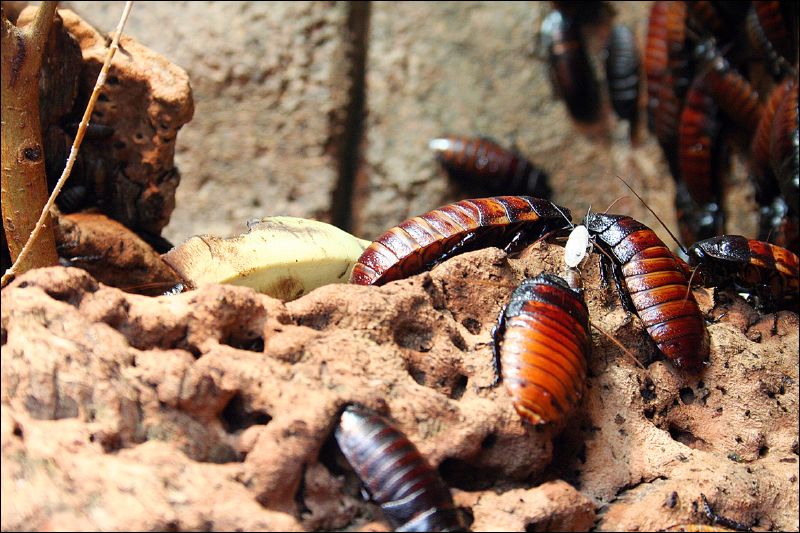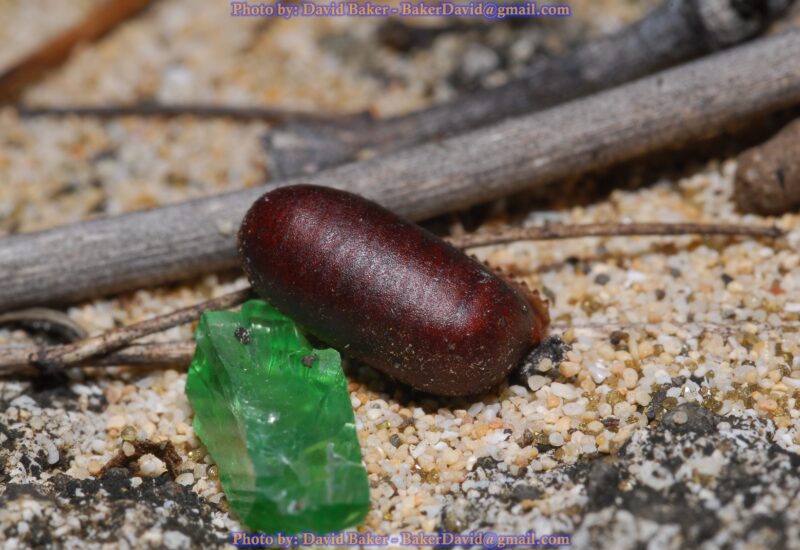Palmetto Bug vs Cockroach: What’s the Difference?

Nothing!
“Palmetto bug” is just a common nickname for the American cockroach. These insects got their name because they like to hide under the big leaves of palmetto trees, a type of palm tree. These pests have many common nicknames including waterbug, flying waterbug, Bombay canary, flying cockroach and southern cockroach. Don’t let some of these nicknames confuse you, palmetto bugs are not aquatic insects and do not live in water.
What do they look like?
Palmetto bugs are reddish-brown cockroaches that are usually about 1.5 inches long. They are the biggest of the cockroaches that frequently invade people’s homes. Although these cockroaches have wings, they are not very good at flying but will glide from one surface to another. People often think they are being attacked by palmetto bugs when they open doors because they tend to “fly” inside toward the light. Although they may seem scary, palmetto bugs do not pose an immediate danger. They rarely ever bite people. Palmetto bug bites are not serious or painful, but may leave a small, red mark. These pests can contaminate your food with bacteria such as salmonella because of their tendency to hide in unsanitary areas. They can also trigger allergies and asthma.
Where do they live?
Palmetto bugs are extremely adaptable. If the weather outside is unsuitable because it’s flooding, too cold or too hot, they will seek shelter inside your home. These cockroaches tend to gather in large groups, sometimes in hundreds or thousands, and find shelter in warm, dark and moist places. Palmetto bugs eat any organic material that is available to them. They will eat decaying animals, scraps of food in the garbage, hair, paper and even glue! These survivalist pests can live two to three months without food and a month without water. Palmetto bugs, especially females, can live for a year and sometimes longer.
Florida’s tropical climate is ideal for palmetto bugs. If a home has been left vacant for a long time, palmetto bugs will likely use it for shelter. Homeowners should keep an eye out for early signs of a pest problem and use a professional cockroach control service year-round to keep palmetto bugs from getting inside.
Check for palmetto bugs near, around, under or in:
- Hollow trees, shrubs, woodpiles, under palm leaves
- Foundations
- Sprinkler systems
- Roof shingles
- Sewers
- Sink and tub drains
- Crawlspaces
- Dirty laundry baskets
- Pools and pool sheds

Signs of a Palmetto Bug Infestation
Palmetto bugs are extremely hard to detect since they are nocturnal. Here are some distinct clues that palmetto bugs are present in your home:
- They give off a distinct, musty smell
- Chew marks on envelopes, book bindings, curtains, stamps and envelopes
- Shed skins and droppings, that look like pepper flakes, in cracks and crevices
How can I get rid of them?
Removing hiding places for these pests from around the house will discourage an infestation.
Tips to deterring palmetto bugs:
- Place firewood up on a rack and keep it away from the house
- If you have a pet, don’t leave uneaten food out overnight
- Keep your grass cut short, especially around the foundation of your home
- Make sure all windows and doors fit tightly with their frames
- Don’t plant shrubbery direct next to or under a window
Palmetto bugs are often mistaken for other large beetles and treatment varies depending on the species of cockroach that is in your house. Palmetto bugs can be tricky to find because they tend to hide during the day and live in small, dark cracks and crevices that are hard to reach. The easiest and quickest way to handle a palmetto bug infestation is to reach out to your local pest management professionals.
For more insight into the difference between palmetto bugs and cockroaches, see our infographic below!

Use the following code to embed this infographic on your site:
This blog was written by Catseye’s Marketing Intern, Kelsey Hart. Kelsey recently graduated from the University of South Carolina with a bachelor’s in Mass Communications and Information Studies.
Header image photo credit: “Underside of P. americana” by Preiselbeere is licensed by CC BY-SA 2.0 de.






